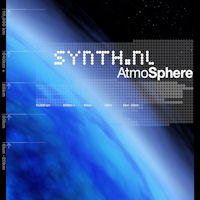
Last night I worked some more on the Wilba MB-6582 SID Synthesizer. Here you can see a picture where I finally added all the flat cables. In total I made 8 and screwed up 5. The problem is especially with stripping the cable. Since it is very tough you easily apply to much force and also cut the wire. And since you have to to 16 strips on one cable, screwing up just one makes the cable unusable. In the end I improved my technique by partially cutting the insulation on both sides of a wire before pulling it of. In this way it takes less force and thus decreasing the possibility of an error.

After this the two PCB could be interconnected. This is also a challenge since you have to align 8 pins of a flat cable in the holes on the other PCB. The first few are OK since then you still have room to move, but since the flat cable is tough the final few are more difficult. It takes some patience :) Ah well it is done now and it looks fine I think. But I anticipated this to be about an hours work up front, but eventually it took me 4 hours in total. Ah but at least I learned from it ;) OK next thing up is attaching the display and front panel to the upper PCB.

And also that was a challenge. I didn't stick to the original building doc by the way. That suggests to glue the front panel to the casing, but I used the original screws to screw the PCB from the bottom. After this the screws sticked out and I just cut the surplus off. Then I could just lay the front panel on top and that is hold in place by the rings of the rotary controllers. The display is also fastened with 4 M2 nuts and bolts. I used some insulation tape to make sure the PCB of the display would not touch anything on the front panel PCB. This also took some more patience by the way ;) Aligning the front panel with all the little knobs ans leds is a painstaking task. But a well. Now it is done it looks great I think :)

And then the most interesting part. Testing! I switched the synthesizer on in the hope that some leds would light up, but actually nothing happened. You first have to load the software in there. So it is not plug and play at all. You can upload software to it via midi, so I attached it to the midi in and out of this Roland keyboard that is connected to the USB port of the PC on my modular desk. Then you have to download a special tool that can communicate with the PIC's on the main PCB. I first uploaded a led test program that switched on all the leds to see if they were not to bright. I didn't wait with installing the led resistors as I posted before, but it all looked fine. Not to bright at all. So that is more luck than wisdom actually. I"ll post about the rest of the software update procedure in a next post. So far at least it communicates with the PC :)
 Last night I worked some more on the Wilba MB-6582 SID Synthesizer. Here you can see a picture where I finally added all the flat cables. In total I made 8 and screwed up 5. The problem is especially with stripping the cable. Since it is very tough you easily apply to much force and also cut the wire. And since you have to to 16 strips on one cable, screwing up just one makes the cable unusable. In the end I improved my technique by partially cutting the insulation on both sides of a wire before pulling it of. In this way it takes less force and thus decreasing the possibility of an error.
Last night I worked some more on the Wilba MB-6582 SID Synthesizer. Here you can see a picture where I finally added all the flat cables. In total I made 8 and screwed up 5. The problem is especially with stripping the cable. Since it is very tough you easily apply to much force and also cut the wire. And since you have to to 16 strips on one cable, screwing up just one makes the cable unusable. In the end I improved my technique by partially cutting the insulation on both sides of a wire before pulling it of. In this way it takes less force and thus decreasing the possibility of an error. After this the two PCB could be interconnected. This is also a challenge since you have to align 8 pins of a flat cable in the holes on the other PCB. The first few are OK since then you still have room to move, but since the flat cable is tough the final few are more difficult. It takes some patience :) Ah well it is done now and it looks fine I think. But I anticipated this to be about an hours work up front, but eventually it took me 4 hours in total. Ah but at least I learned from it ;) OK next thing up is attaching the display and front panel to the upper PCB.
After this the two PCB could be interconnected. This is also a challenge since you have to align 8 pins of a flat cable in the holes on the other PCB. The first few are OK since then you still have room to move, but since the flat cable is tough the final few are more difficult. It takes some patience :) Ah well it is done now and it looks fine I think. But I anticipated this to be about an hours work up front, but eventually it took me 4 hours in total. Ah but at least I learned from it ;) OK next thing up is attaching the display and front panel to the upper PCB. And also that was a challenge. I didn't stick to the original building doc by the way. That suggests to glue the front panel to the casing, but I used the original screws to screw the PCB from the bottom. After this the screws sticked out and I just cut the surplus off. Then I could just lay the front panel on top and that is hold in place by the rings of the rotary controllers. The display is also fastened with 4 M2 nuts and bolts. I used some insulation tape to make sure the PCB of the display would not touch anything on the front panel PCB. This also took some more patience by the way ;) Aligning the front panel with all the little knobs ans leds is a painstaking task. But a well. Now it is done it looks great I think :)
And also that was a challenge. I didn't stick to the original building doc by the way. That suggests to glue the front panel to the casing, but I used the original screws to screw the PCB from the bottom. After this the screws sticked out and I just cut the surplus off. Then I could just lay the front panel on top and that is hold in place by the rings of the rotary controllers. The display is also fastened with 4 M2 nuts and bolts. I used some insulation tape to make sure the PCB of the display would not touch anything on the front panel PCB. This also took some more patience by the way ;) Aligning the front panel with all the little knobs ans leds is a painstaking task. But a well. Now it is done it looks great I think :) And then the most interesting part. Testing! I switched the synthesizer on in the hope that some leds would light up, but actually nothing happened. You first have to load the software in there. So it is not plug and play at all. You can upload software to it via midi, so I attached it to the midi in and out of this Roland keyboard that is connected to the USB port of the PC on my modular desk. Then you have to download a special tool that can communicate with the PIC's on the main PCB. I first uploaded a led test program that switched on all the leds to see if they were not to bright. I didn't wait with installing the led resistors as I posted before, but it all looked fine. Not to bright at all. So that is more luck than wisdom actually. I"ll post about the rest of the software update procedure in a next post. So far at least it communicates with the PC :)
And then the most interesting part. Testing! I switched the synthesizer on in the hope that some leds would light up, but actually nothing happened. You first have to load the software in there. So it is not plug and play at all. You can upload software to it via midi, so I attached it to the midi in and out of this Roland keyboard that is connected to the USB port of the PC on my modular desk. Then you have to download a special tool that can communicate with the PIC's on the main PCB. I first uploaded a led test program that switched on all the leds to see if they were not to bright. I didn't wait with installing the led resistors as I posted before, but it all looked fine. Not to bright at all. So that is more luck than wisdom actually. I"ll post about the rest of the software update procedure in a next post. So far at least it communicates with the PC :)










No comments:
Post a Comment